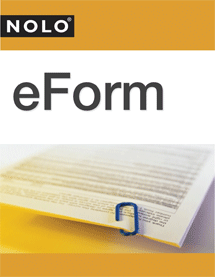Are retirement accounts protected from creditors? ERISA-qualified retirement accounts are generally safe from judgment creditors, but other accounts might not be.
If a creditor gets a judgment against you and you have a retirement account, then the judgment creditor might be able to seize all or part of the account. Whether the creditor can get your money depends on whether your account is an ERISA-qualified retirement account or a non-ERISA account. ERISA accounts are generally protected from judgment creditors, as are employee welfare benefits (like medical insurance, HSAs, and employer disability benefits).
Read on to learn the difference between ERISA and non-ERISA retirement accounts, and when your retirement account is safe from judgment creditors, and when it might not be.
What Is the Employee Retirement Income Security Act (ERISA)?
The federal Employee Retirement Income Security Act (ERISA) governs how private-sector employers provide benefit plans to employees.
ERISA-Qualified Retirement Accounts
If you have a retirement plan that was set up under ERISA, then it is usually protected from judgment creditors. To be protected, your pension must be a qualified retirement plan.
What Is A Qualified Retirement Plan?
Your employer isn't required to provide a qualified ERISA plan, but if it does, it must meet certain requirements. To be ERISA-qualified, the retirement plan must be set up and maintained by your employer or separate employee organization (or both). The plan must provide for payment of retirement income to participating employees.
The plan must also contain the following features:
- provide regular and automatic written information to you and other employees about the plan, including what the plan does and how the plan gets its funding
- require the employer to provide some funding into the plan, either directly or indirectly
- allow employees to become eligible to participate in the plan after they have been employed a certain period of time
- provide for accumulation of benefits by each participating employee
- guaranty benefits to employees upon their retirement, termination of the plan or employment, or other event
- obligate any person who manages the plan and its assets to be accountable to the participating employees for any losses as a result of mismanagement of the plan
- allow participating employees the right to sue the plan and/or its managers for benefits or damages as a result of mismanagement of the plan, and
- prohibit voluntary transfer by the participating employees of their interest in benefits in the plan, called an "anti-alienation" provision.
Anti-Alienation Clause
One of the most important features of a qualified ERISA plan is its anti-alienation provision. What this means is that you can't freely transfer, sell, or give your rights in benefits to someone else, nor can your rights to those benefits be taken away.
This provision is what effectively prevents judgment creditors from getting to your ERISA plan. It prevents an employer or plan administrator from releasing your benefits to a creditor who attempts to attach that plan.
Common Types of ERISA Accounts
Typical types of qualified ERISA plans include:
- 401(k) plans
- deferred compensation plans, and
- profit sharing plans.
Employee Welfare Benefit Plans
In addition to pension plans, ERISA may also cover employee welfare benefit plans. What this means is that if your plan isn't a qualified ERISA retirement plan, but is "covered by" ERISA as a qualified employee welfare benefit plan, then that plan is also protected from attachment the same way as your ERISA retirement plan.
A "welfare benefit plan" provides medical care benefits, monetary payments in the event of illness, disability, accident, death or unemployment, and payment of benefits related to retirement, vacation, child care, education, prepaid legal services or similar benefits to the employee.
Examples of employee welfare benefit plans include:
- group health and life insurance plans
- dental and vision plans
- daycare
- accidental death or disability benefits
- Health Reimbursement Arrangements (HRA)
- Health Savings Accounts (HSA)
- wellness programs (including drug, alcohol and tobacco addiction), and
- employee assistance programs.
Exceptions: When Your ERISA Account Might Be at Risk
Protection of your qualified-ERISA plan isn't iron-clad. There are some circumstances when a creditor can still get to your ERISA benefits. That includes seizure by:
- your ex-spouse under a Qualified Domestic Relations Order (QDRO), to the extent of your spouse's interest in those benefits as a marital asset or as part of a child support attachment
- IRS for federal income tax debts, although protected from state and local tax claims
- federal government for criminal fines and penalties, and
- civil or criminal judgments in cases where you did something wrong against the plan.
Distributions From a Retirement Plan
While a ERISA plan is generally protected, the distributions made to you might not be. At least one federal court has held that your ERISA benefits might no longer be protected once they leave the plan and are distributed to you. For example, if you deposit the distributions you receive from a retirement plan into a regular checking account, then a judgment creditor might be able to attach those funds in the account. Of course, you might still be able to protect those funds by using other exemptions available in your state. The protection of distributions depends heavily on state law, with some states providing protections for distributions if they're deposited in segregated accounts and traceable to the retirement plan. But in other states, protections are limited for distributions from qualified plans.
If you roll over the distributions into another qualified plan, then they may remain protected.
Non-ERISA-Qualified Retirement Accounts
Judgment creditors might be able to seize retirement plans that aren't qualified or covered under ERISA. These types of accounts aren't protected by the anti-alienation clause, which means whether they are protected depends on state and federal exemption laws, which might provide much less protection against the claims of creditors.
Common Types of Non-ERISA Retirement Accounts
A great deal of retirement plans and accounts are non-ERISA and might be at risk, such as:
- traditional Individual Retirement Accounts (IRAs)
- Roth IRAs
- Simplified Employee Pension (SEP) Plans
- SIMPLE IRAs
- Keogh Plans
- plans that do not benefit employees, or "employer-only" plans
- government plans, and
- church plans.
State Law Protection
Your state's exemption laws will determine whether and to what extent your non-ERISA retirement account is protected from judgment creditors. The range of protection available is broad and varies from state to state.
Some states might provide a full exemption for IRA accounts. Other states set a cap, or limit, as to how much you can protect in your IRA. While many states might allow you to exempt all or part of your IRA, you might not be entitled to exemptions for child support orders.
Amount Reasonably Necessary for Support
Many states that don't fully exempt IRAs and other non-ERISA retirement accounts also don't set a dollar cap. Instead, you are entitled to exempt only that amount "reasonably necessary for the support" of you and your dependents. There is no set definition of what this means, and courts in those states will typically consider it on a case-by-case basis. Usually, this will be an issue if you:
- have a large IRA account
- are relatively young and can make more contributions into your plan, or
- have other sources of income to support yourself and your dependents.
Alternatives If Your Retirement Account Is at Risk of Attachment
If you have a non-exempt, non-ERISA retirement account that might be subject to attachment by the judgment creditor in your state, you might want to consider filing bankruptcy. This is because bankruptcy laws may allow you to protect up to $1,711,975 (2025 figure) in your IRA, while still affording you relief from your creditors.
To learn more, including whether you qualify for bankruptcy protection, visit Nolo's Bankruptcy topic area.



